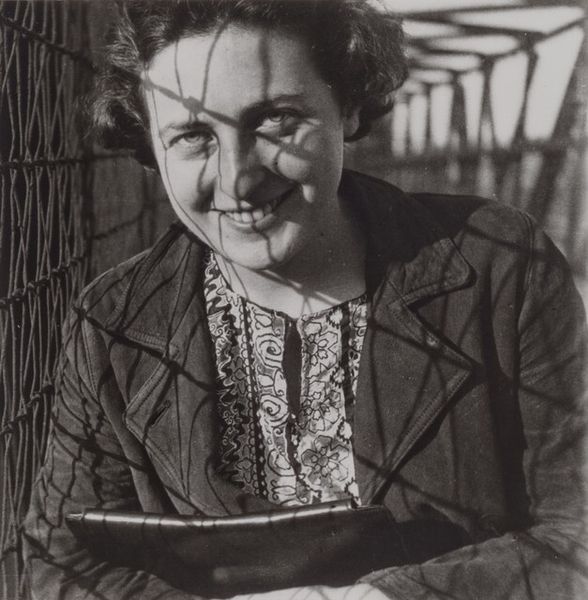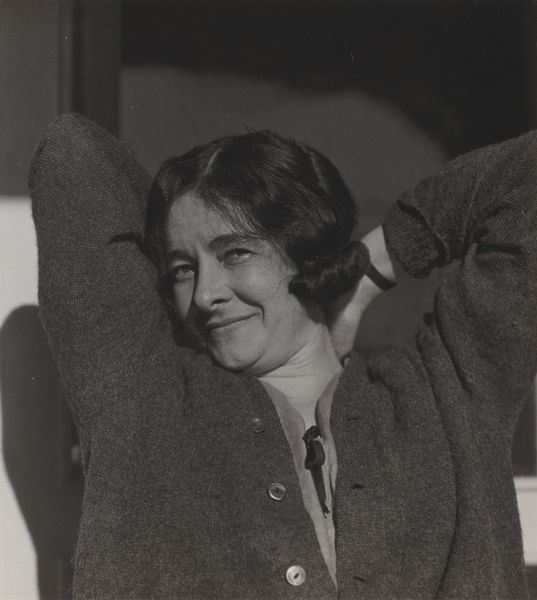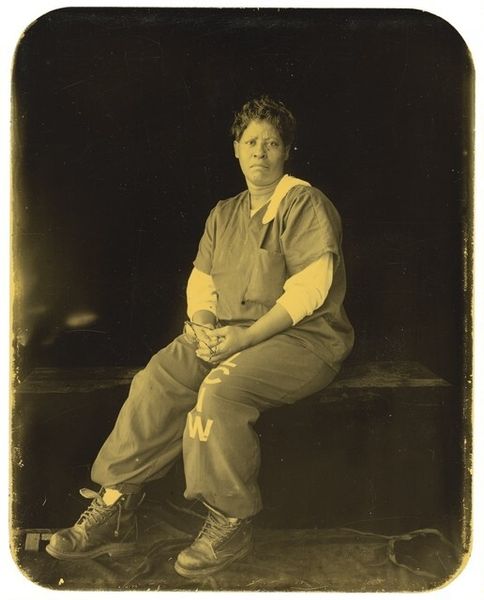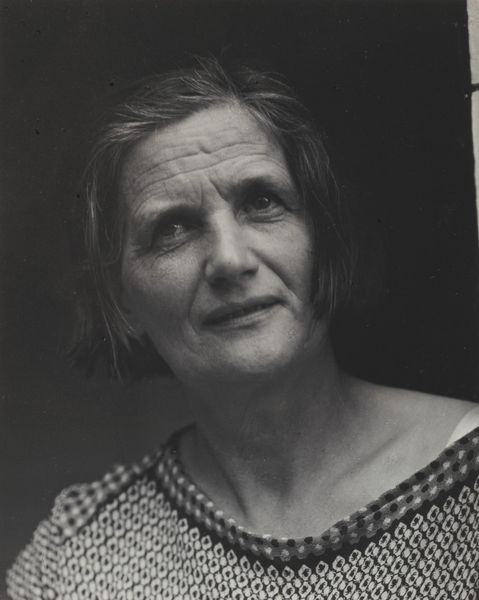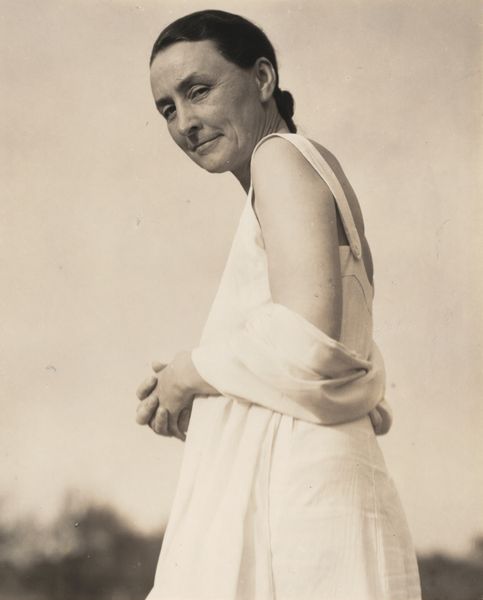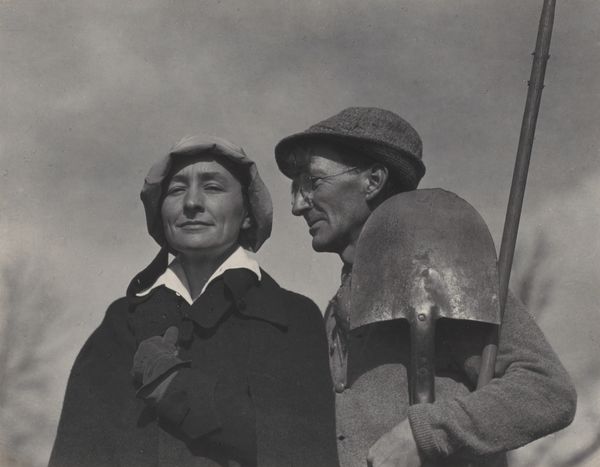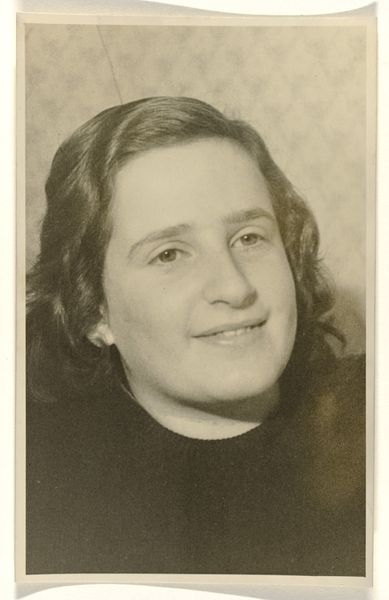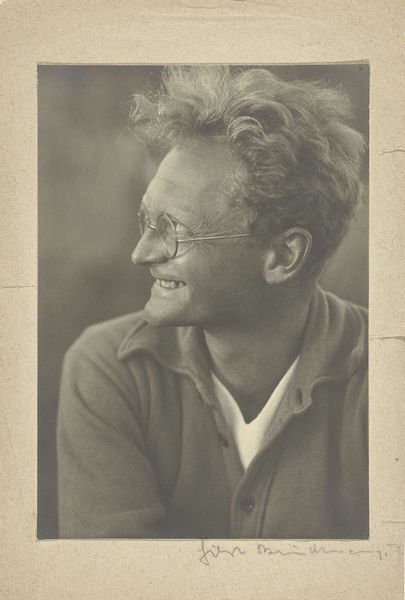
Arkansas mother come to California for a new start, with husband and eleven children. Now a rural rehabilitation client. Tulare County, California c. 1938 - 1960
0:00
0:00
photography, gelatin-silver-print
#
portrait
#
black and white photography
#
portrait image
#
landscape
#
social-realism
#
photography
#
black and white
#
gelatin-silver-print
#
monochrome photography
#
ashcan-school
#
realism
#
monochrome
Dimensions: image: 34.1 × 26.9 cm (13 7/16 × 10 9/16 in.) mount: 49.5 × 39.5 cm (19 1/2 × 15 9/16 in.)
Copyright: National Gallery of Art: CC0 1.0
Curator: This is Dorothea Lange’s portrait, taken between 1938 and 1960, titled "Arkansas mother come to California for a new start, with husband and eleven children. Now a rural rehabilitation client. Tulare County, California." It’s a gelatin silver print. Editor: My immediate impression is resilience. There’s a softness to the light, yet her stance—arms crossed, leaning slightly—suggests strength despite the hardship hinted at in the title. The subtle monochrome palette almost feels timeless. Curator: It is a compelling combination. Note the almost Madonna-like quality. The gentle, knowing smile speaks of hope amid difficulty. The cross formed by her arms echoes classic iconography of strength and maternal sacrifice. Editor: Absolutely, but I think the title is key here. Lange is consciously framing her within a larger narrative of the Dust Bowl migration and the promises—often broken—of California. It humanizes the statistics we often see associated with this period. The “rural rehabilitation client” aspect situates the image in a New Deal context. Curator: Good point. But I'm intrigued by the symbolism inherent in her clothing; the utilitarian style and simple belt suggest both practicality and an enduring connection to the land, despite their displacement. It signifies her rural roots but also her readiness to adapt. Editor: True. And that weathered wooden post she leans against becomes symbolic, too, perhaps representing a support, even a makeshift one, in a new and challenging environment. It all feeds into the politics of representation. Lange, I think, is prompting the viewer to empathize, to confront the human cost of economic policies and environmental disaster. The picture transcends the aesthetic. It becomes a call to action. Curator: Yes, seeing that shared visual vocabulary brings together elements of enduring, archetypal suffering and yet grounds it in very specific lived experience, which intensifies its appeal. Editor: Ultimately, this image challenges us to consider whose stories get told, and how we interpret those narratives through a critical lens. Curator: A powerful reminder to see the timeless and the timely interlaced in a photograph.
Comments
No comments
Be the first to comment and join the conversation on the ultimate creative platform.

